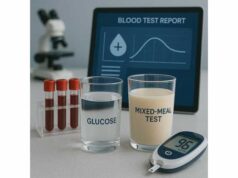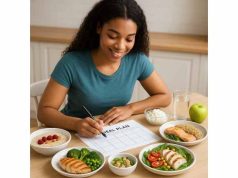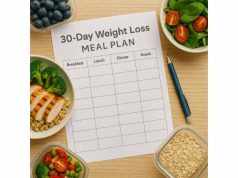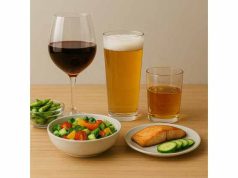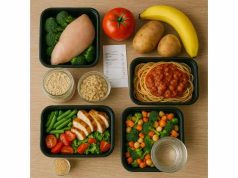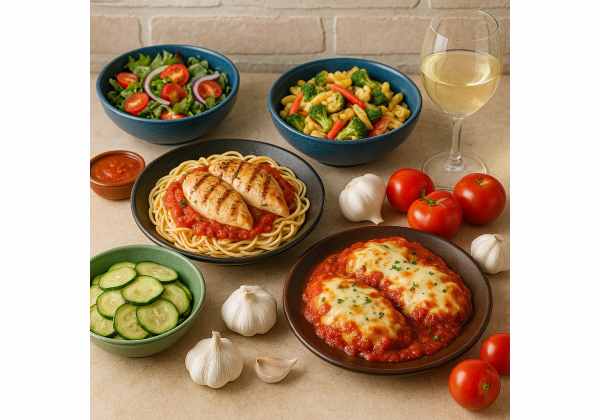
Italian food can absolutely fit a weight-loss plan. The cuisine offers grilled seafood, lean meats, bean soups, fresh salads, and tomato-based sauces that deliver bold flavor without runaway calories. The challenge is portion size and rich add-ons—creamy sauces, baskets of bread, and extra oil. This guide shows you how to scan any Italian menu quickly, choose satisfying dishes, and customize orders so you leave full, not stuffed. If you want a refresher on daily calorie targets, macro balance, and sample menus before you go, start with our page on calorie targets and meal planning, then come back ready to order with confidence.
Table of Contents
- What to order for weight loss
- Build a balanced Italian plate
- Smart swaps and sides
- Common menu traps and fixes
- Drinks, bread, and sauces
- Low-carb, vegetarian, and gluten-free
- Ready-to-order picks and macros
- Frequently Asked Questions
What to order for weight loss
Italian menus are easy to navigate once you know where to look: antipasti and secondi sections are full of lean proteins and vegetables, while primi (pasta and risotto) benefit from portion control and lighter sauces.
Best entrée categories
- Secondi (grilled mains): look for branzino al forno, salmone alla griglia, pollo al mattone, bistecca tagliata (sliced steak), or vitello alla griglia. Ask for light oil and extra vegetables.
- Antipasti as a meal: carpaccio, prosciutto e melone, grilled calamari, caprese with light mozzarella, or verdure grigliate. Pair one with a side salad or a vegetable contorno.
- Soups and salads: minestrone, pasta e fagioli (ask for light pasta), insalata mista with vinaigrette on the side.
- Pasta smartly: choose pomodoro, marinara, arrabbiata, puttanesca, or vongole; request mezza porzione (half portion) or share. Add shrimp or grilled chicken for protein.
Pizza without the “food coma”
- Favor Neapolitan-style or Roman-style thin crust; choose Margherita, vegetariana, or funghi; ask for light mozzarella.
- Split a pizza and add a bitter greens salad (arugula, radicchio) with lemon and a teaspoon of olive oil.
Sides that elevate fullness
- Contorni like broccoli rabe, spinach with garlic, grilled zucchini, roasted cauliflower, or mixed vegetables.
- Beans (cannellini, chickpeas) where offered; they add fiber and stay with you.
Customization phrases that work
- “Light on the oil, please.”
- “Sauce on the side.”
- “Half pasta portion.”
- “Extra vegetables instead of potatoes.”
If you want a quick primer on sustainable fat-loss fundamentals before you dine, review our guide to safe weight-loss strategies and then use the tactics above to match the menu.
Build a balanced Italian plate
Use a simple structure: protein anchor + high-volume vegetables + smart carbs + measured fats. This template keeps meals satisfying and predictable, even without exact nutrition facts.
Protein anchor (25–45 g)
Aim for grilled fish (branzino, salmon, tuna), shellfish (shrimp, scallops), chicken breast, lean steak, or a double portion of beans with a sprinkle of parmesan. Ask how dishes are cooked; most kitchens will grill or roast on request.
High-volume vegetables
Load your plate with contorni: broccoli rabe, spinach, grilled eggplant, roasted peppers, cauliflower, or a large insalata mista. Request extra vegetables with secondi and ask for dressing on the side so you control the pour.
Smart carbs (½–1 cup cooked or equivalent)
Choose al dente pasta with tomato-based sauce, polenta in a modest square, roasted potatoes in a small portion, or thin-crust pizza shared with the table. If dessert or wine is planned, lean harder on vegetables and skip the extra starch.
Measured fats (flavor, not floods)
Italian food shines with olive oil, cheeses, and cured meats. Keep them measured: a teaspoon or two of oil, 1–2 tablespoons of parmesan, or a few slices of prosciutto for garnish—not the base of the dish.
Plate examples
- Grilled salmon plate: salmon + double roasted vegetables + lemon; side salad with vinaigrette on the side; skip potatoes.
- Half-portion pasta + protein: mezza porzione spaghetti pomodoro topped with grilled shrimp; large arugula salad with lemon and a teaspoon of olive oil.
- Pizza strategy: share a Margherita, add a bitter greens salad, and stop at two slices, focusing the rest of the meal on vegetables and lean protein.
For visual guidance on portions at restaurants, see our quick plate method and adapt it to Italian menus.
Smart swaps and sides
Tiny changes make large calorie differences in Italian cuisine. Use these swaps to keep flavor high and calories focused on what satisfies you most.
Bread basket rules
- Decide your bread budget before it lands—one small slice or none. Ask for olive oil in a teaspoon dish and add balsamic or lemon for brightness. If bread triggers overeating, request no bread or bring it with the meal only.
Sauce selection
- Choose tomato-based sauces: pomodoro, marinara, arrabbiata, puttanesca (capers, olives).
- Be selective with rich sauces: alfredo, carbonara, alla vodka, and heavy pesto. If you order them, request half sauce and add extra vegetables.
Pasta and pizza smartening
- Ask for mezza porzione pasta or share.
- Add protein (shrimp, chicken) and extra veg (spinach, mushrooms, zucchini) to turn pasta into a balanced plate.
- With pizza, choose thin crust, light cheese, and vegetable toppings; limit to two slices and fill the rest of the meal with salad or vegetables.
Salads and contorni that fill you up
- Insalata mista, arugula with lemon, caprese (light mozzarella), roasted vegetables, broccoli rabe.
- Ask for dressings on the side and use a teaspoon at a time.
Dessert decisions
- Split desserts. Choose sorbetto, fresh berries, or a single scoop gelato; or order an affogato (espresso over a small scoop) and share.
Looking for more low-calorie, high-volume choices to pair with Italian mains? Browse our quick list of high-volume foods that keep portions generous without overshooting calories.
Common menu traps and fixes
Oversized primi
A “normal” restaurant pasta can equal two to three home servings. Fix: order half portion, share with the table, or pair a half pasta with a grilled secondi or salad.
Cream-heavy sauces
Alfredo, carbonara, vodka cream, and four-cheese sauces stack calories fast. Fix: choose pomodoro or arrabbiata most nights; if you want a creamy option, ask for half sauce and extra vegetables.
Bread, oil, and cheese creep
Unlimited bread and generous pours of olive oil add up quietly. Fix: decide a set amount (one slice; one teaspoon oil). Request grated cheese at the end and add a tablespoon yourself.
Fried starters
Calamari fritti, arancini, and mozzarella sticks are easy to overeat. Fix: choose grilled calamari, carpaccio, or minestrone to start.
“Hidden” calories in salads
Cheese piles, candied nuts, croutons, and creamy dressings can exceed pasta calories. Fix: ask for light cheese, no croutons, vinaigrette on the side, and extra vegetables.
Wine refills
Another glass can be 120–150 calories. Fix: order one glass, enjoy sparkling water afterward, or split a half bottle across the table.
If progress stalls despite “eating healthy” out, scan these patterns and adjust. Our checklist of common diet mistakes can help you pinpoint quick wins.
Drinks, bread, and sauces
Zero- or low-calorie drinks
- Water (still or sparkling) with lemon, unsweetened iced tea, black coffee or espresso.
- Ask for sparkling water in a wine glass so it feels festive without calories.
Smarter alcohol choices
- Dry wine (5 oz) or a spritz built with prosecco, soda water, and extra orange (light on liqueur).
- Negroni and other spirit-forward drinks are small but calorie-dense; enjoy occasionally and count it in your day.
- Alternate each alcoholic drink with water.
Bread tactics that work
- Request bread with the meal, not before.
- Keep olive oil portions to a teaspoon or use balsamic and lemon for flavor.
Sauce strategy
- Tomato-based sauces lead most nights.
- Use pesto as a drizzle rather than a base (ask for a spoon on the side).
- For bolognese, request extra vegetables and a half pasta portion.
Want a deeper dive into budgeting alcohol while losing weight? See our quick guide to alcohol choices and calorie control.
Low-carb, vegetarian, and gluten-free
Low-carb approach
Build plates around secondi and contorni: grilled fish or chicken, steak tagliata, roasted vegetables, and a side salad. Use olive oil by the teaspoon. If you want pasta, choose mezza porzione and a tomato-based sauce, or skip pasta and add beans for fiber.
Vegetarian
Anchor meals with minestrone, pasta e fagioli (light pasta), eggplant alla griglia, caprese (light mozzarella), and salads with beans. Watch fried starters and cream-heavy sauces. Add parmesan sparingly or swap in extra vegetables.
Gluten-free
Many restaurants offer gluten-free pasta; confirm separate boiling water and cross-contact policies. Lean on grilled secondi, polenta, risotto (small portion), and vegetable contorni. Check meatballs for breadcrumbs.
Dairy-light
Favor tomato-based dishes, grilled proteins, and vegetables. Request no cheese and use olive oil or lemon for finish.
Sodium and oil awareness
Restaurant food can run salty and oily. Balance with sparkling water, extra vegetables, and sauce on the side. The low-carb and low-fat trade-offs vary by person; compare approaches in our overview of low-carb and low-fat styles.
Ready-to-order picks and macros
Use these examples to assemble satisfying meals at common calorie targets. Macros are approximations based on typical restaurant portions; adjust to your appetite and daily plan.
~400–500 calories (lighter meals)
- Grilled calamari + salad: grilled calamari starter with lemon; insalata mista with vinaigrette on the side. (~35 g protein)
- Minestrone + vegetables: large minestrone, side of verdure grigliate. (fiber-forward, ~15–20 g protein)
- Two slices Margherita + arugula salad: thin-crust pizza, light cheese, plus arugula with lemon. (~18–25 g protein)
~550–700 calories (moderate meals)
- Branzino al forno plate: baked branzino, double vegetables, lemon; teaspoon olive oil; skip potatoes. (~40–45 g protein)
- Half pasta pomodoro + shrimp: mezza porzione spaghetti pomodoro topped with 4–6 grilled shrimp; side salad. (~35–40 g protein)
- Chicken paillard + vegetables: thin grilled chicken breast with arugula and tomatoes; side of roasted cauliflower. (~45 g protein)
~700–850 calories (bigger appetite or training day)
- Bistecca tagliata: sliced grilled steak over arugula and shaved parmesan; side of grilled zucchini; teaspoon olive oil. (~45–50 g protein)
- Seafood fra diavolo bowl: half pasta portion with spicy tomato seafood mix; extra peppers and mushrooms; side salad. (~40–45 g protein)
- Shared pizza strategy: three thin-crust slices vegetariana, large bitter greens salad, and grilled shrimp appetizer shared. (~35–40 g protein)
Macro cues for any order
- Protein: target 25–45 g per meal—double up on fish or chicken, or pair pasta with shrimp.
- Fiber: include vegetables and beans to stay full.
- Fat: use cheese and oil as accents (measured), not the foundation.
If dessert calls, share berries with mascarpone or one scoop gelato and trim pasta or bread earlier in the meal.
Frequently Asked Questions
What is the healthiest order at an Italian restaurant for weight loss?
Pick a grilled secondi (fish, chicken, or steak) with double vegetables and a salad with dressing on the side. If you want pasta, choose a half portion with tomato-based sauce and add shrimp or chicken for protein. Limit bread and keep olive oil measured.
Is pasta off-limits if I am trying to lose weight?
No. Ask for a half portion and a tomato-based sauce like pomodoro or arrabbiata. Add lean protein and extra vegetables. Pair with sparkling water and skip bread or dessert to stay within your calorie budget.
Which sauces are best for weight loss at Italian restaurants?
Tomato-based sauces—pomodoro, marinara, arrabbiata, puttanesca—are usually lighter. Alfredo, carbonara, vodka cream, and heavy pesto are richer; if you choose them, request half sauce and add vegetables to balance the plate.
How do I handle the bread basket without overeating?
Decide on a set amount (one small slice or none), ask for bread with the meal, and use a teaspoon of olive oil with balsamic or lemon. If bread is a trigger, request no bread basket entirely.
Can I drink wine and still lose weight?
Yes—plan it. Order one glass of dry wine or a lighter spritz made with prosecco and soda water. Alternate with sparkling water, and account for the calories by trimming bread, pasta, or dessert that day.
What is a good low-carb option at an Italian restaurant?
Choose a grilled secondi (salmon, branzino, chicken paillard, steak tagliata) with two vegetable sides and a salad. Add a small serving of beans if it helps fullness. Skip pasta and bread or enjoy a few bites rather than a full portion.
Are pizza and weight loss compatible?
Yes—share a thin-crust pizza, choose vegetable toppings, ask for light cheese, and stop at two slices. Fill the rest of the meal with a large salad and grilled vegetables to stay satisfied without overshooting calories.
References
- Downsizing food: a systematic review and meta-analysis examining the effect of reducing served food portion sizes on daily energy intake and body weight 2022 (Systematic Review & Meta-Analysis)
- Are Dietary Proteins the Key to Successful Body Weight Management? A Systematic Review and Meta-Analysis of Studies Assessing Body Weight Outcomes after Interventions with Increased Dietary Protein 2021 (Systematic Review & Meta-Analysis)
- Effects of low-carbohydrate diets versus low-fat diets on metabolic risk factors in overweight and obese adults: A meta-analysis of randomized controlled trials 2022 (Meta-Analysis of RCTs)
Disclaimer
This article is for general education only and does not replace personalized medical advice, diagnosis, or treatment. Speak with your healthcare professional about diet changes—especially if you have diabetes, celiac disease, kidney or liver conditions, are pregnant, or have a history of disordered eating.
Share and follow
If this guide helps you order confidently at Italian restaurants, consider sharing it with a friend who eats out often. For more practical nutrition guides, follow us on the platform you use most—Facebook, X, or another network you prefer.

